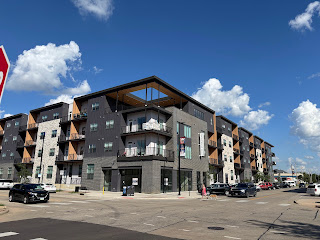 |
| King Rehoboam and his very powerful pinkie, way more powerful than yours, or Kim Jong Un's, from a painting by Hans Holbein the Younger (1497-1543) |
It’s State of the Union week, and I’m thinking about King
Rehoboam. I’ve been thinking about King Rehoboam a lot lately.
About 920 BCE, Rehoboam went to Shechem to become King of
Israel following the death of his father, the famed Solomon. The dynasty begun
by his grandfather David had placed the monarchy in the tribe of Judah, and by
the end of Solomon’s reign the other tribes were complaining of mistreatment.
Led by one Jereboam, leaders from the other tribes met with the new king to demand
easier treatment: Your father made our
yoke heavy. Now therefore lighten the hard service of your father and his heavy
yoke that he placed on us, and we will serve you (I Kings 12:4, NRSV).
According to the nearly-identical accounts in I Kings 12 and
II Chronicles 10, Rehoboam took three days to formulate his response. He sought
advice from two groups, holdovers from Solomon’s court and his own
contemporaries.
Then King Rehoboam took counsel with the older men who had attended his father Solomon while he was still alive, saying "How do you advise me to answer these people?" They answered him, "If you will be a servant to this people today and serve them, and speak good words to them when you answer them, then they will be your servants forever." But he disregarded the advice that the older men gave him, and consulted with the young me who had grown up with him and now attended him. He said to them, "What do you advise that we answer this people who have said to me, 'Lighten the yoke that your father put on us?' The young men who had grown up with him said to him, "Thus you should say to this people who spoke to you, 'Your father made our yoke heavy, but you must lighten it for us;' thus you should say to them, 'My little finger is thicker than my father's loins. Now, whereas my father laid on you a heavy yoke, I will add to your yoke. My father disciplined you with whips, but I will discipline you with scorpions.'" (I Kings 12:6-11)
So that was the answer Rehoboam gave to Jereboam’s group.
Predictably, the other tribes rebelled, Rehoboam’s adjutant was killed, and the
king retreated to Jerusalem to raise an army. A prophet named Shemaiah talked
him out of that; neverthless, “there was war between Rehoboam and Jereboam
continually” (I Kings 14:30), and the Kingdom of Israel was permanently
divided.
I read this story as having a negative tone, and would like
you to do that, too. My takeaway is a superiority complex leads to
unwillingness to compromise leads to division leads to weakness. But the
Biblical accounts are maddeningly ambiguous about this. Some commentaries note
the writers are harder on the separatists than on the king. Rehoboam’s tone
with the other tribes is called “harsh” (I Kings 12:13) but the message is not
condemned, nor is the separation lamented. Rehoboam is scored an “evil” king
(II Chronicles 12:14)—so is Jereboam—but it’s because of idol worship not the
breakup of the kingdom. The southern kingdom of Judah endures, enjoying a single
line of succession until the Babylonian conquest in 586. That’s more than three
hundred years after the breakup; the United States is still a few decades short
of that. Moreover, there’s indication the breakup was God’s idea
to begin with (cf. I Kings 11: 9-13, 26-40)—punishment of Solomon but not
necessarily of the whole country.
The run through Jewish history in the Book of Sirach is clearer:
Solomon rested with his ancestors,
and left behind him one of his sons,
broad in[j] folly and lacking in sense,
Rehoboam, whose policy drove the people to revolt. (Sirach 47:23a)
Either way there’s plenty of evidence that Rehoboam’s brash pronouncement left his country weaker and less secure. Take a look at this list of section headings covering the entire 300-plus-year history of the southern kingdom (Miller 2001):
The run through Jewish history in the Book of Sirach is clearer:
Solomon rested with his ancestors,
and left behind him one of his sons,
broad in[j] folly and lacking in sense,
Rehoboam, whose policy drove the people to revolt. (Sirach 47:23a)
Either way there’s plenty of evidence that Rehoboam’s brash pronouncement left his country weaker and less secure. Take a look at this list of section headings covering the entire 300-plus-year history of the southern kingdom (Miller 2001):
- Unstable beginnings
- In the shadow of the Omnirides [Northern kingdom]
- A century of instability and decline
- Assyrian domination
- Egyptian domination
- Babylonian domination and the end of the Kingdom of Judah
Of course, amidst prose that was often purple and occasionally incoherent, he made sure to push the right buttons--veterans, the troops, the police, the 2nd amendment, the flag, violent gangs of immigrants, Guantanamo Bay, Jerusalem, the UN, Communists (!), various absurd policies of his predecessor--for his core supporters. Repeal of the individual mandate underlying the Affordable Care Act was presented as a favor to the poor, and the border wall as a favor to immigrants, although no one's kidding themselves that those were or are likely to be supportive constituencies.
Our common life in the 21st century requires intelligent public policy by a government that recognizes necessities and knows its limits. This speech was short on policy aside from his four-point immigration proposal; certainly the section on infrastructure did not live up to the expectations the administration had set. It also requires a public sense of common destiny and maybe even common purpose. We're not likely to get meaningful contribution to that public sense from this President, no matter who writes his speeches. The more critical question is: Do we the people even want a sense of common destiny? The example of Rehoboam looms.
The text of the State of the Union address is here.
SOURCE: J. Maxwell Miller, "The Kingdom of Judah," in Bruce M. Metzger and Michael D. Coogan (eds), The Oxford Guide to People & Places of the Bible (Oxford, 2001), 165-169
SEE ALSO:
Stephen Lee Davis, "Eight Questions to Ask About Infrastructure During Tonight's State of the Union," T4America, 30 January 2018
Charles Marohn, "A Review of the White House Infrastructure Plan," Strong Towns, 29 January 2018
Karen Tumulty, Philip Rucker and Elise Viebeck, "Trump's Call for Unity Slams Into Reality of Washington's Political Divisions," Washington Post, 31 January 2018
SEE ALSO:
Stephen Lee Davis, "Eight Questions to Ask About Infrastructure During Tonight's State of the Union," T4America, 30 January 2018
Charles Marohn, "A Review of the White House Infrastructure Plan," Strong Towns, 29 January 2018
Karen Tumulty, Philip Rucker and Elise Viebeck, "Trump's Call for Unity Slams Into Reality of Washington's Political Divisions," Washington Post, 31 January 2018







































